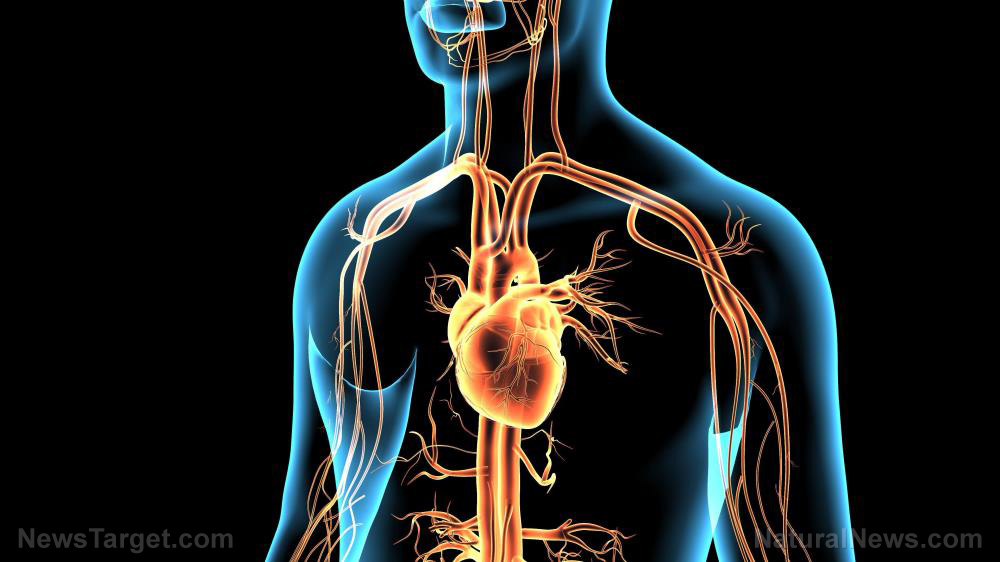Study: Daily muscle training for the diaphragm and other breathing muscles helps lower blood pressure
09/29/2022 / By Belle Carter

New study shows that daily muscle training for the diaphragm and other breathing muscles helps promote heart health, reduces high blood pressure and lessens the risk of a heart attack.
“The muscles we use to breathe atrophy, just like the rest of our muscles tend to do as we get older,” explained Daniel Craighead, an integrative physiologist at the University of Colorado Boulder and head of the research team.
Craighead’s team recruited healthy volunteers aged 18 to 82 to try a daily five-minute technique using a resistance-breathing training device called PowerBreathe to test what happens when these muscles are given a good workout.
The hand-held machine, which looks like an inhaler, provides resistance when a person breathes into it, making it harder to inhale. The resistance trains the breathing muscles.
The researcher found that doing 30 breaths per day for six weeks using the device lowers systolic blood pressure (the first number in the ratio) by about nine millimeters of mercury (mmHg). These reductions are what could be expected with conventional aerobic exercises like walking, running or cycling.
According to Michael Joyner, a physician who studies how the nervous system regulates blood pressure, a nine mmHg reduction is significant. “That’s the type of reduction you see with a blood pressure drug,” he said.
Joyner thinks the prospects of integrating strength training for the respiratory muscles into preventive care are promising. He noted that people can easily use the device at home, especially those who are unable to do a traditional aerobic exercise.
“Taking a deep, resisted breath offers a new and unconventional way to generate the benefits of exercise and physical activity,” Joyner wrote in an editorial published alongside a prior study in the Journal of the American Heart Association.
According to the Centers for Disease Control and Prevention, the normal blood pressure reading is about 120/80 mmHg. Some health care professionals diagnose patients with high blood pressure if their average reading is consistently 130/80 mmHg or higher.
Nitric oxide touted as a “cardio miracle”
When asked how breath training lowers blood pressure, Craighead pointed to the role of endothelial cells, which line the blood vessels and promote the production of nitric oxide. Nitric oxide (NO) helps widen the blood vessels, promoting good blood flow and preventing the buildup of plaque in arteries.
“What we found was that six weeks of IMST [inspiratory-muscle strength training] will increase endothelial function by about 45 percent,” Craighead explained.
Aside from the breathing device, people with high blood pressure can turn to the supplement “Cardio Miracle.” Its founder John Hewlett embarked on a five-year journey to produce the world’s finest nitric oxide supplement. (Related: The Robert Scott Bell Show: John Hewlett discusses the “cardio miracle” nitric oxide – Brighteon.TV.)
The discovery of the function of NO, which won the Nobel Prize in Medicine, gave humanity hope to conquer the deadliest disease on the planet. Scientists later learned that NO not only regulates blood pressure and increases blood flow, but also plays a vital role on the whole body system.
Aside from its effectiveness against heart disease, NO also facilitates autophagy – the body’s way of cleaning out damaged cells in order to regenerate healthier cells. NO can also enhance lymphatic drainage and activate the body’s stored vitamin D.
Visit ReverseHeartDisease.news for more stories on ways to steer clear of heart diseases.
Watch this episode of “The Robert Scott Bell Show” on Brighteon.TV that talks about the “cardio miracle” NO supplement.
More related stories:
John Hewlett discusses the importance of nitric oxide on “The Robert Scott Bell Show” – Brighteon.TV.
Deep breathing leads to stress relief, researchers find.
Slow Breathing Can Transform Your Health.
Sources include:
Submit a correction >>
Tagged Under:
alternative medicine, breath training, Deep breathing, health science, heart disease, heart health, high blood pressure, natural cures, natural health, natural medicine, Naturopathy, nitric oxide, PowerBreathe, research
This article may contain statements that reflect the opinion of the author
RECENT NEWS & ARTICLES
HeartDisease.News is a fact-based public education website published by Heart Disease News Features, LLC.
All content copyright © 2018 by Heart Disease News Features, LLC.
Contact Us with Tips or Corrections
All trademarks, registered trademarks and servicemarks mentioned on this site are the property of their respective owners.




















